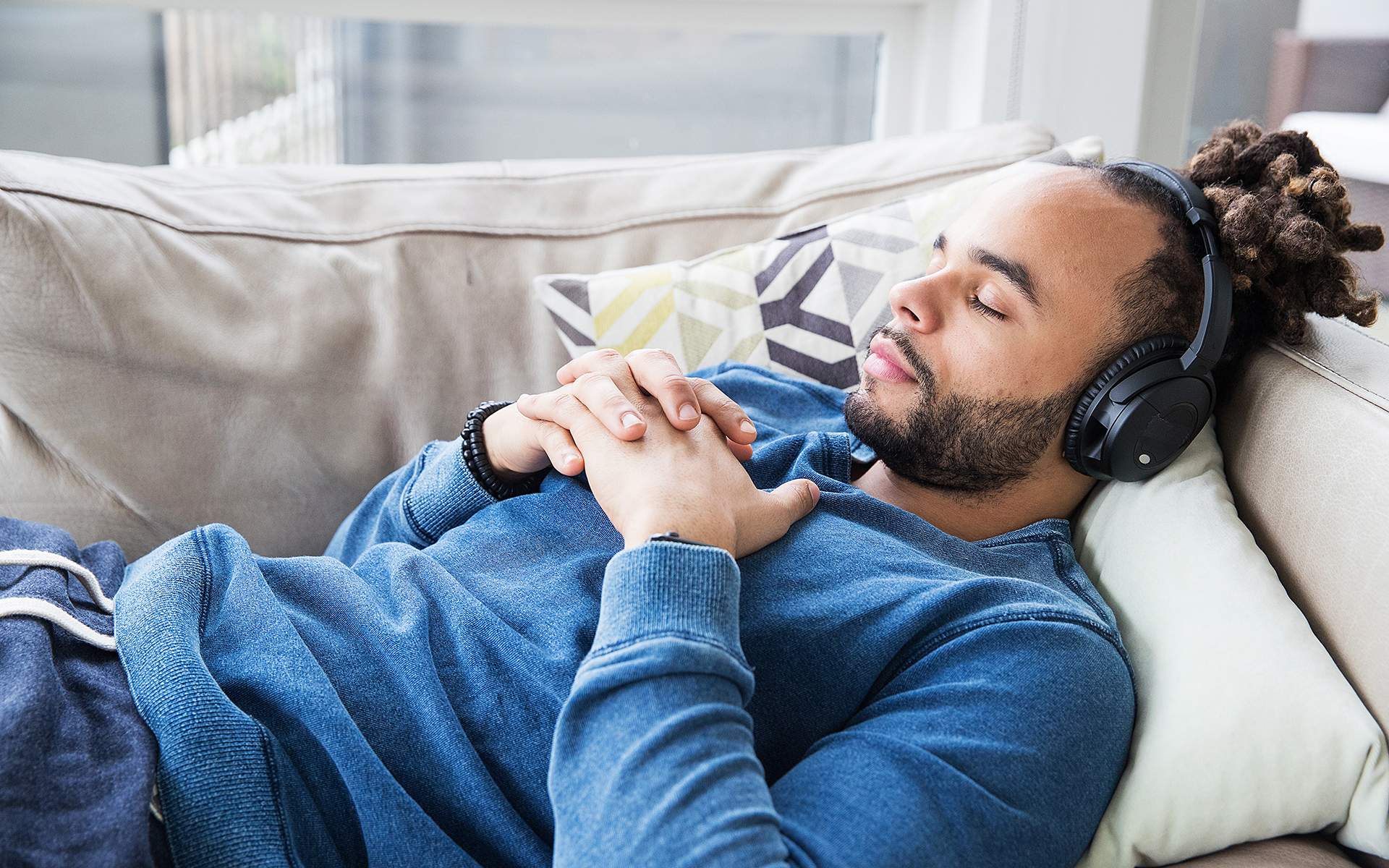These days, anxiety, which we already know is contagious, seems to be spreading like wildfire. And if you’ve ever struggled with anxiety, you might also know it’s not just in your brain, but at its worst permeates your entire body as well. As a clinician, I’ve even encountered cases of people breaking out in hives with anxiety, in addition to the sweats, chills, shakes, shortness of breath, and pounding heart that many of us associate with anxiety. What’s more, many of these signs of anxiety can also look like sickness, and it is often hard to parse what’s what, especially when many of us are afraid of becoming sick ourselves.
Many signs of anxiety can also look like sickness, and it is often hard to parse what’s what, especially when many of us are afraid of becoming sick ourselves.
This is where practices like the body scan can help—is that tight chest a symptom of serious illness, or is it more likely anxiety? Anxiety usually passes pretty quickly, while symptoms of illness can last for days. In shorter moments in the day, we might not have the time away from family or work for a forty-minute body scan, or even if we had time, anxiety can really cut into our ability to pay attention. A number of years ago I heard a great acronym from a colleague that we can use for a mini body scan or relaxation practice when we are feeling flooded with strong emotions, anxiety, anger, or anything else setting off our limbic alarm system.
The practice is as simple as the acronym. “The CALM Reminder” helps us check into and then relax four big zones of our body (C-Chest, A-Arms, L-Legs, M-Mouth). Those four zones offer great information about our emotional state. What’s more, when we relax our body zone by zone, it becomes physiologically almost impossible to also be stressed, anxious, angry, or otherwise overwhelmed with difficult emotions.
A Body Scan Practice: The Calm Reminder
This practice can expand or contract depending on the amount of time and attention you have—from just a few minutes, up to ten or fifteen. Start by finding a comfortable position to stand, sit or lie down. Allow your eyes to close if you feel comfortable. Begin with a few expanded breaths, allowing your body to relax as you extend the out-breath.
C-Chest
After a few breaths, bring your awareness to your chest and torso area. First scan your chest, opening and lifting it, creating enough room for your lungs and belly to fully expand. Bring your awareness to any sensations there.
Is your breath shallow and short, or slow and even? As you regulate your breath, you regulate your body and brain, and in turn your emotions, impulses, and attention. Is your heart beating fast or slow? Is there any tightness or tension in your chest?
Allow your breath to expand your chest, releasing any tension there. Lastly, tense all the muscles throughout your chest and torso, hold for a count of three as you notice what tension feels like, then allow your muscles to relax and feel the tension flow away and relaxation flow in with the next few breaths
A-Arms
Shift your awareness now into your arms, from your shoulders down to your fingers. Lift and drop your shoulders once and let your arms fall to your sides or into your lap. Now scan your awareness upward from your hands through the forearms and upper arms.
Are they shaking or still? Can you just allow them to settle if they are shaking? Are they tensed partly into fists? If so, just release that tension. Are your hands sweaty or clammy?
Scan up your arms to your shoulders, continuing to notice any other sensations that might give you a clue as to your emotional state.
Lastly, squeeze your fists, tense your arms all the way up to your shoulders and hold for three breaths, feeling the tension, and then just release the physical and emotional tension, and let your arms relax completely. Take three more breaths, enjoying the relaxation you feel in your arms.
L-Legs
On the next breath, direct your attention down to your legs, from your hips down through your toes, allowing your attention and breath to flow through your thighs, calves, and feet. Often our legs can be shaking with anxiety, or hold tension and stress. Notice if your legs are communicating anything in this moment, and just allow them to become still if they are.
Then, gently begin to squeeze the muscles in your feet, up through your legs and around your waist, holding that tension for three breaths, noting the sensations, and then release. Take three more breaths as you feel the tension flowing out of your legs.
M-Mouth
Lastly, shift your awareness to your mouth and jaw, a place where many of us hold tension and clench our muscles without realizing it.
What expression is your mouth communicating inwardly and outwardly—stress, anxiety, anger? Notice this and any other sensations in your mouth and even the rest of your head and neck. Now clench your mouth and other muscles around it, holding for three breaths and release.
As you let go of the tension, allow your mouth to relax into a small smile to yourself and to the world around you. Take a few more moments to enjoy the sensations of relaxation and smiling.
As you come to the end of your practice, you might take time to reflect on where in your body you tend to hold emotions and tension, and adjust or breathe into those areas before finishing your practice. Remember too that at any point in your busy day you might choose to check in with your body and relax yourself. Perhaps before or during tense moments at work, after you read the news, with a partner or your family, or even before bed, you can CALM yourself down with this simple acronym.







